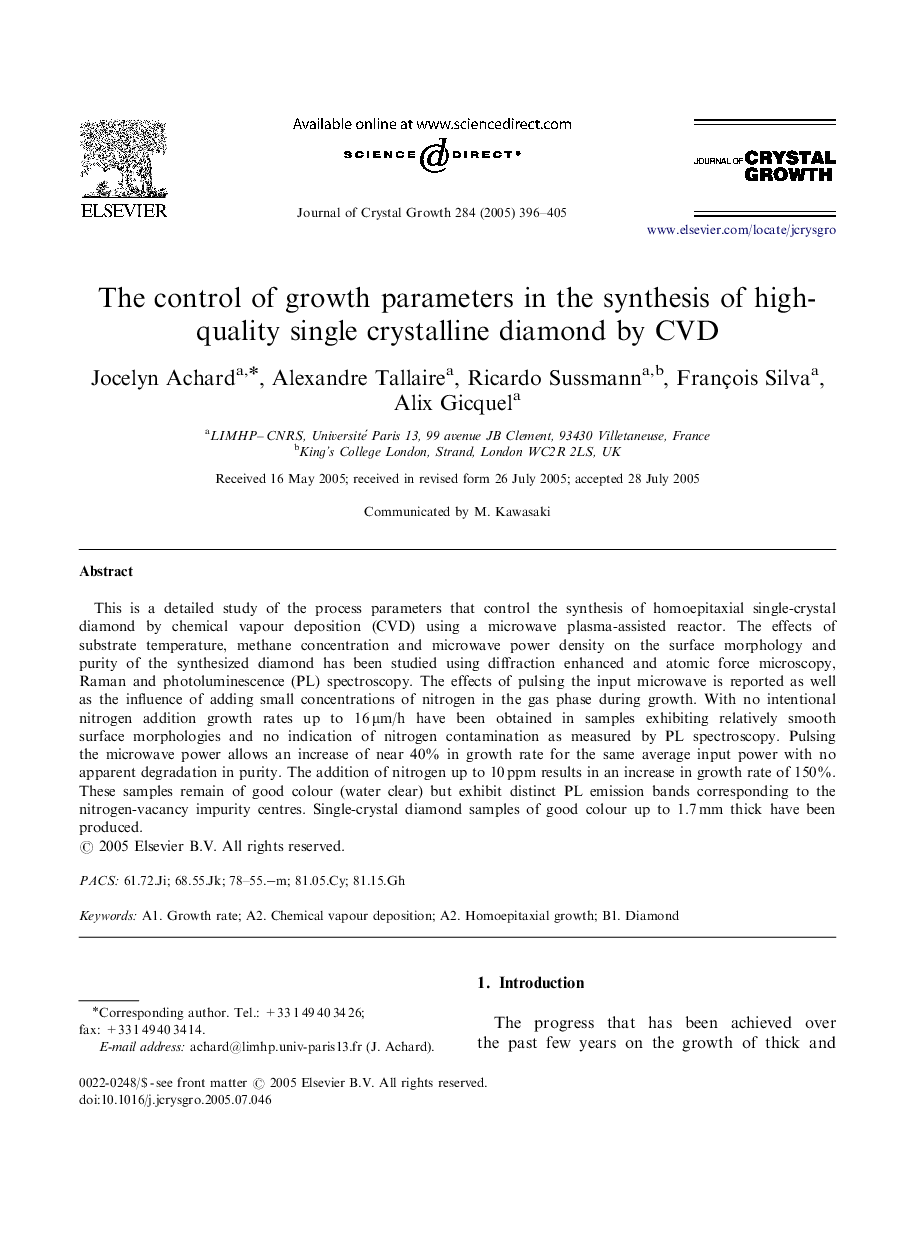| Article ID | Journal | Published Year | Pages | File Type |
|---|---|---|---|---|
| 9829317 | Journal of Crystal Growth | 2005 | 10 Pages |
Abstract
This is a detailed study of the process parameters that control the synthesis of homoepitaxial single-crystal diamond by chemical vapour deposition (CVD) using a microwave plasma-assisted reactor. The effects of substrate temperature, methane concentration and microwave power density on the surface morphology and purity of the synthesized diamond has been studied using diffraction enhanced and atomic force microscopy, Raman and photoluminescence (PL) spectroscopy. The effects of pulsing the input microwave is reported as well as the influence of adding small concentrations of nitrogen in the gas phase during growth. With no intentional nitrogen addition growth rates up to 16 μm/h have been obtained in samples exhibiting relatively smooth surface morphologies and no indication of nitrogen contamination as measured by PL spectroscopy. Pulsing the microwave power allows an increase of near 40% in growth rate for the same average input power with no apparent degradation in purity. The addition of nitrogen up to 10 ppm results in an increase in growth rate of 150%. These samples remain of good colour (water clear) but exhibit distinct PL emission bands corresponding to the nitrogen-vacancy impurity centres. Single-crystal diamond samples of good colour up to 1.7 mm thick have been produced.
Related Topics
Physical Sciences and Engineering
Physics and Astronomy
Condensed Matter Physics
Authors
Jocelyn Achard, Alexandre Tallaire, Ricardo Sussmann, François Silva, Alix Gicquel,
